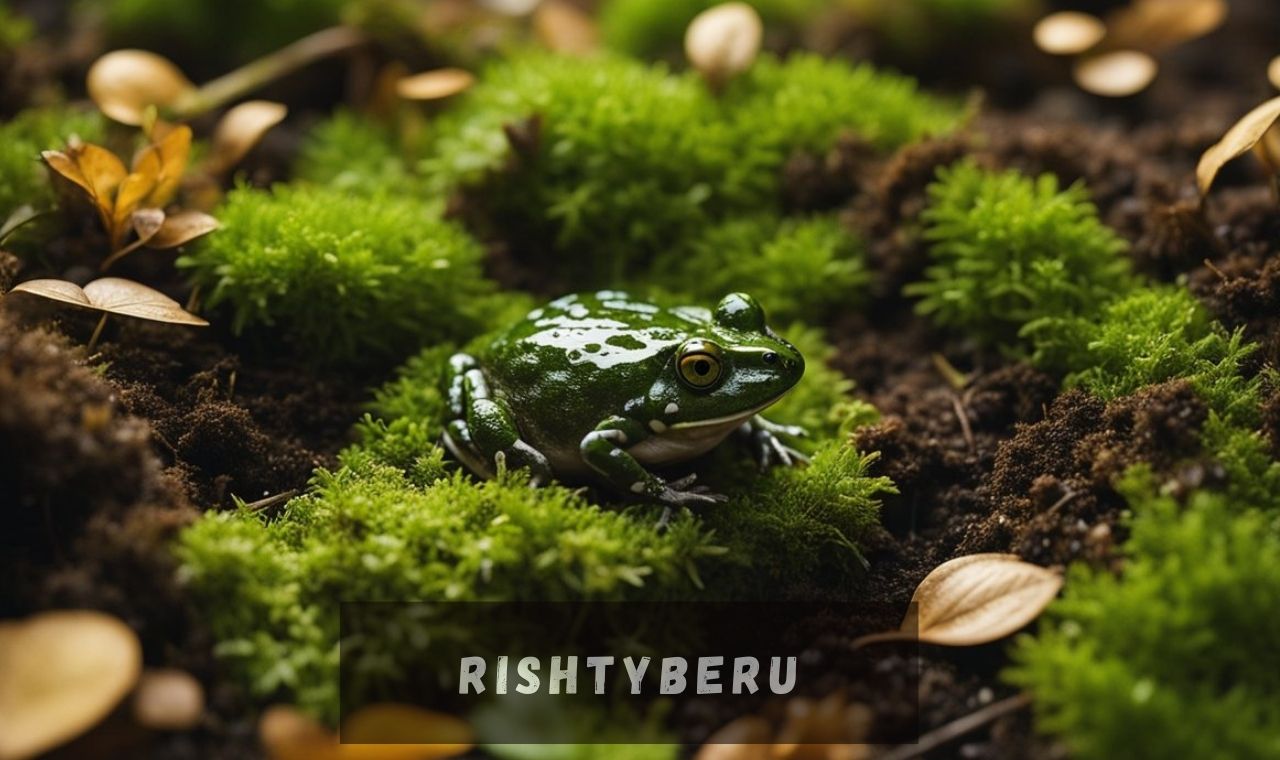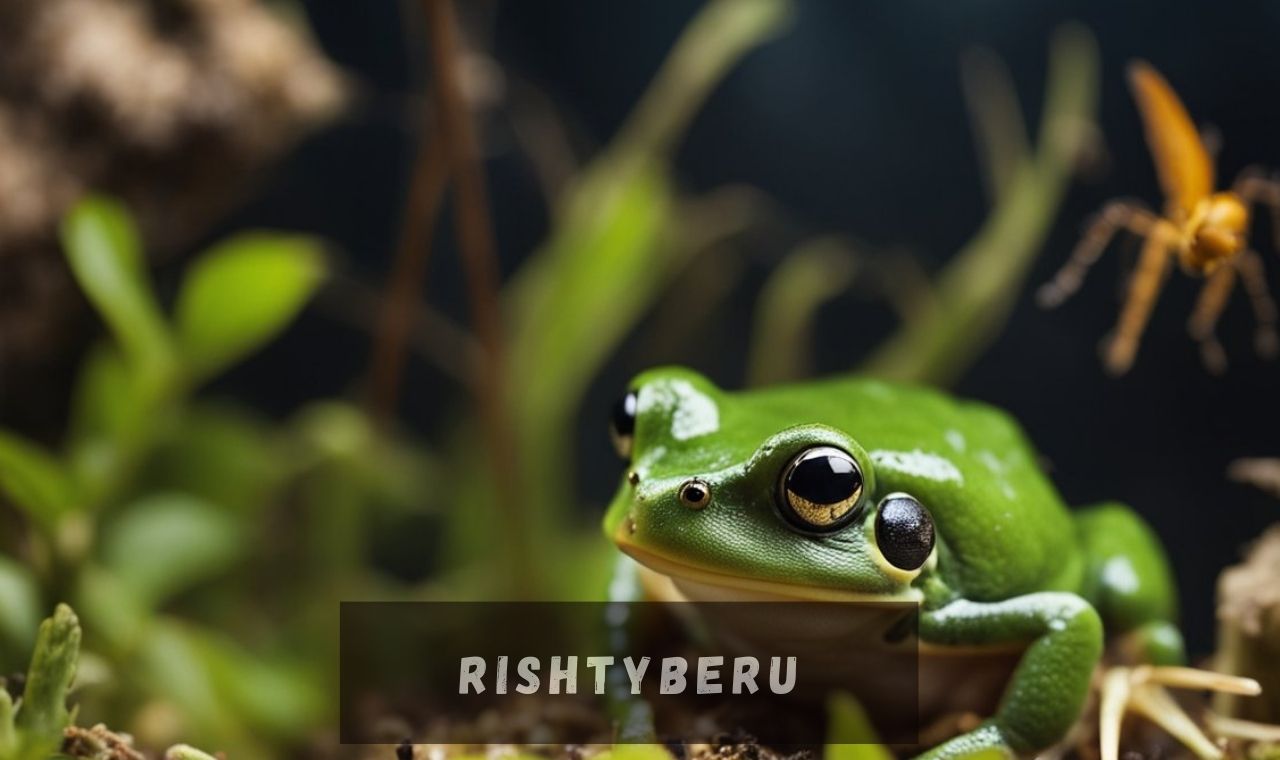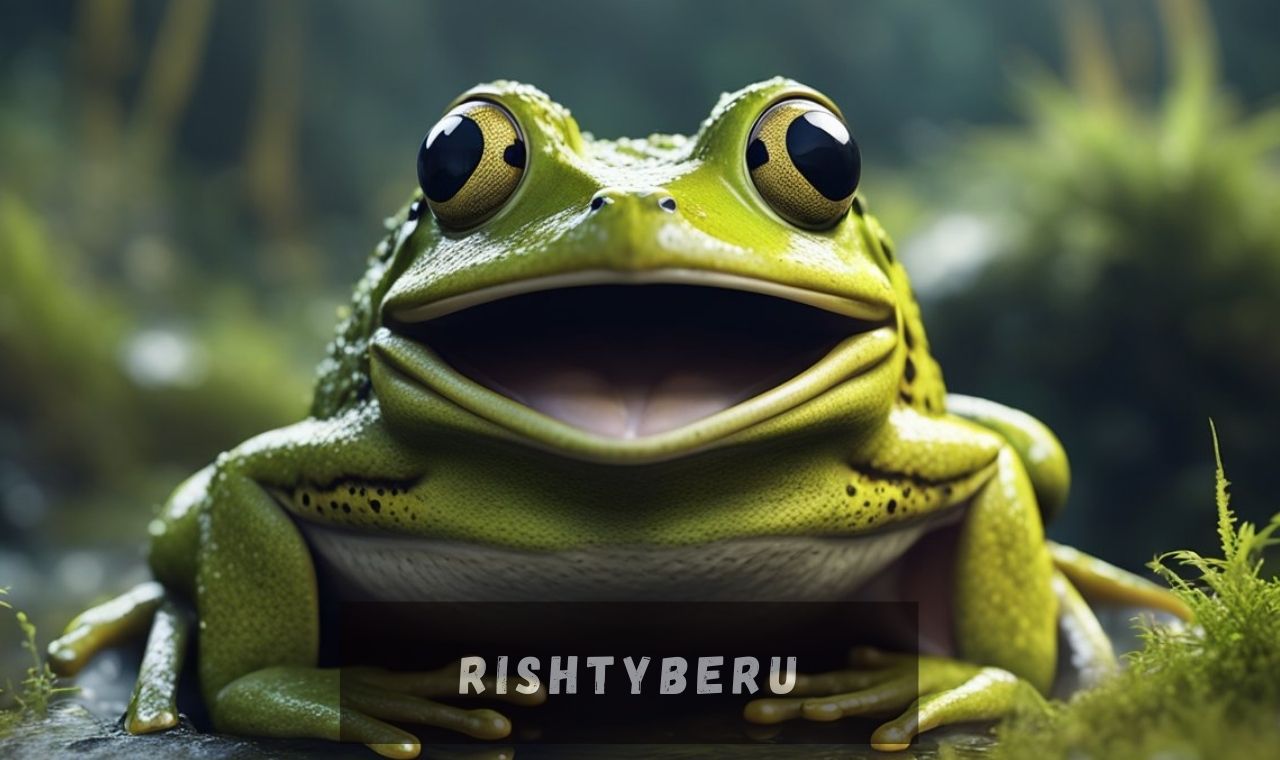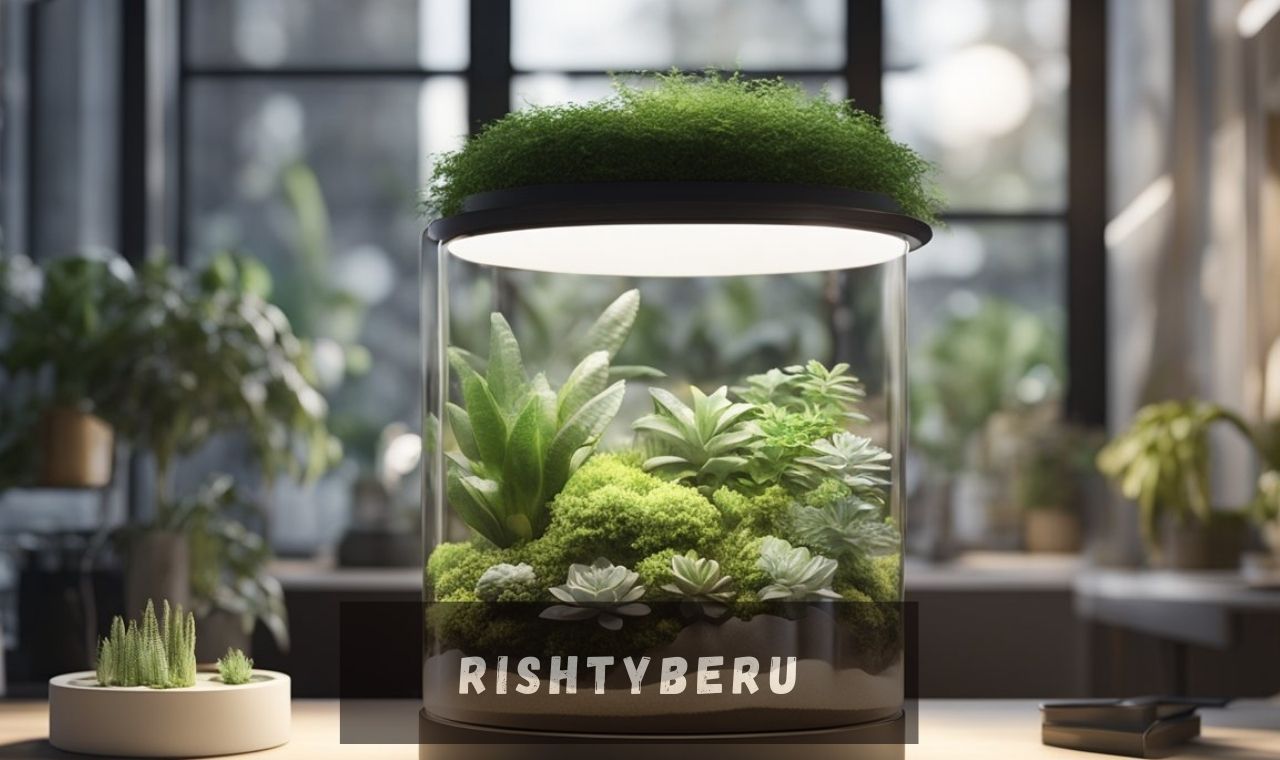Did you realize that the substrate you choose for your Pacman frog’s enclosure can significantly influence its well-being and contentment? Amphibian experts emphasize the importance of selecting a substrate that closely resembles the natural habitat of Pacman frogs. With a staggering diversity of over 7,000 frog species worldwide, each with its own specific environmental needs, it’s imperative to cater to the unique requirements of Pacman frogs. This article delves into the optimal substrate choices for Pacman frogs, providing invaluable insights to assist you in creating a delightful abode for your beloved pet.
Key Insights:
- The substrate choice profoundly impacts the health and comfort of Pacman frogs.
- Pacman frogs necessitate a specialized substrate that mirrors their natural habitat.
- This article furnishes enlightening details on selecting the most suitable substrate for Pacman frogs.
- Making informed decisions while selecting substrates for Pacman frogs is paramount.
- This guide aims to help pet owners grasp the significance of their substrate choices in ensuring the well-being of their Pacman frogs.
Understanding the Natural Habitat of Pacman Frogs
To establish a suitable and cozy environment for your Pacman frog, it’s crucial to gain insights into the characteristics of their natural habitats. Let’s uncover essential information about Pacman frogs, their origins, preferred substrates, and wild living conditions.
Origins of Pacman Frogs:
Pacman frogs, scientifically known as South American horned frogs (Ceratophrys sp.), hail from the grasslands and rainforests of South America, primarily in countries like Argentina, Brazil, and Paraguay. The humid and diverse environments in these regions, abundant in various substrates, offer Pacman frogs a nourishing and comfortable habitat, setting standards for ideal substrate choices in domestic Pacman frog care.
Insights from the Wild: Composition of Natural Substrates
Examining wild environments provides valuable insights into suitable substrate choices for Pacman frogs. In their natural habitats, Pacman frogs burrow into a mixture of loose, humid soil, fallen leaves, moss, and decomposing plant matter. These components provide essential moisture, insulation, and comfort, vital for designing a domestic habitat conducive to Pacman frog well-being.
The Importance of Substrate in Captivity
Accurately replicating aspects of the Pacman frog’s natural environment is crucial for their thriving in captivity. Substrate, in particular, plays a pivotal role in facilitating natural behaviors such as burrowing and hiding. It also helps maintain optimal humidity levels essential for skin health. Moreover, inappropriate substrate choices can lead to health issues such as skin irritations, stress, and potentially harmful ingestion. Thus, it is imperative to be knowledgeable and deliberate in selecting Pacman frog habitat substrate.
Key Attributes of a Safe and Appropriate Substrate
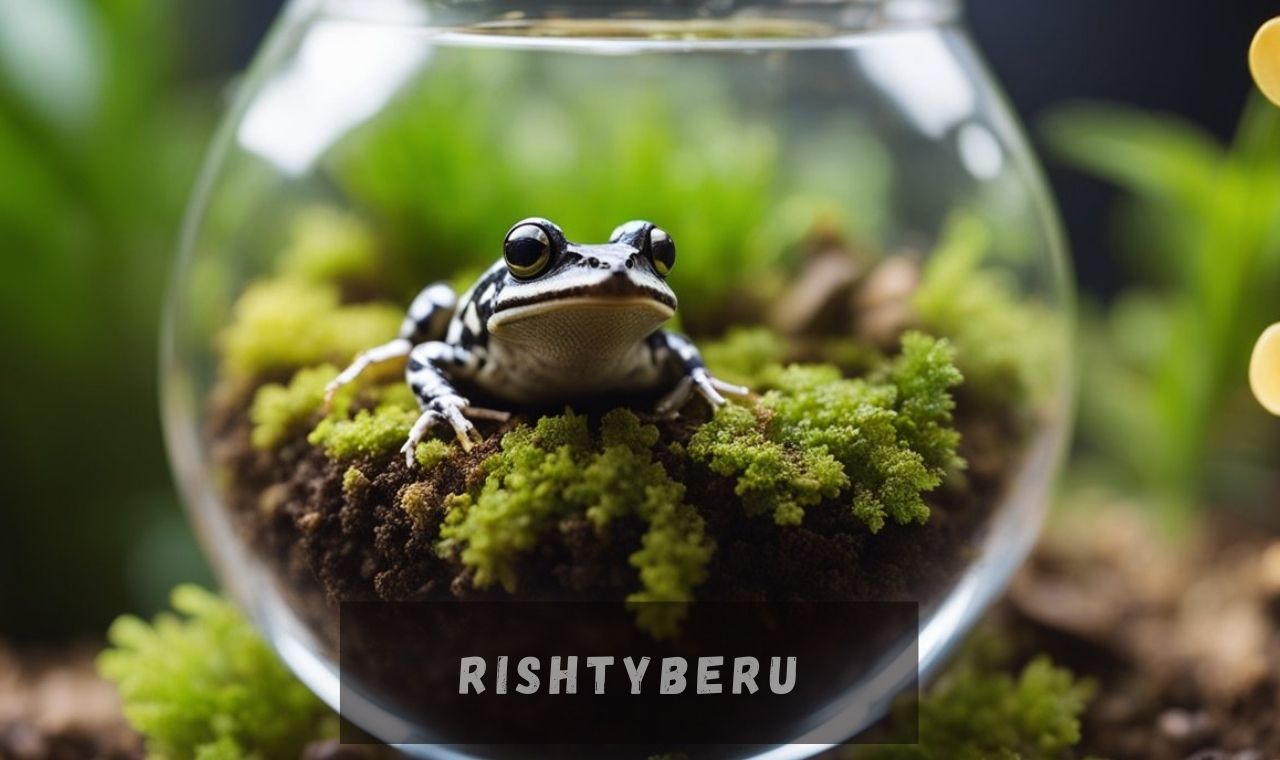
Ensuring a cozy and engaging habitat for your pacman frog requires thoughtful consideration of tank substrates. It’s not just about choosing safe, non-toxic materials; factors like moisture retention, suitable texture for digging, and minimizing ingestion risks are crucial. This guide delves into these essential characteristics to help owners pick the ideal substrates for their pacman frog’s tank.
Hydration and Moisture Retention
Maintaining optimal hydration is vital for the well-being of pacman frogs. Given their semi-aquatic nature, it’s essential to select substrates capable of retaining moisture to replicate the humid conditions of their natural habitat. Adequate hydration supports their respiratory health, skin condition, and overall wellness. Therefore, substrates with excellent water retention abilities, such as coconut coir or expanding clay pellets, rank high among recommended choices for pacman frog tank substrates.
Texture and Digging Comfort
The texture of the substrate also plays a significant role in recreating a natural environment for pacman frogs. As enthusiastic diggers, they thrive in substrates that encourage this behavior. A soft, loosely packed substrate allows pacman frogs to burrow comfortably for rest or hunting, mirroring their natural instincts. Top substrate options that cater to this preference include sphagnum moss and topsoil.
Minimizing Ingestion Risks
Another critical factor often overlooked is the potential risk of ingestion by pacman frogs. With their wide mouths and voracious appetites, they may inadvertently ingest parts of their enclosure while feeding. Choosing a substrate that poses minimal risk of impaction, a hazardous health condition, is crucial. Coconut coir and topsoil substrates, with their fine particles and natural composition, are known to be practical and safe choices in this regard.
Top Substrate Recommendations for Pacman Frogs
Selecting the right substrate for your pacman frog is essential for its well-being and happiness. The chosen substrate should closely resemble their natural habitat to promote thriving. We’ve compiled a list of top substrates for pacman frogs, considering factors such as moisture retention, ingestion risk reduction, and texture that supports natural behaviors.
Remember, each substrate has its pros and cons, so it’s crucial to choose one that aligns with both your pet’s needs and your capabilities as an owner.
| Substrate | Pros | Cons |
|---|---|---|
| Peat Moss | Great moisture retention, supports burrowing | May require regular changes to avoid mold growth |
| Coconut Fiber | Eco-friendly, safe if ingested | Can dry out quickly, needs frequent misting |
| Sphagnum Moss | Superb moisture retention, safe for Pacman frogs | Can be more expensive than other options |
| Organic Potting Soil | Easily accessible, inexpensive | Potential for chemical or fertilizer residue |
When it comes to selecting bedding for your Pacman frog’s terrarium, remember that a combination of substrates can be effective depending on your pet’s specific requirements. The key is to strike a balance and maintain consistent substrate conditions for your frog’s well-being.
Here are some tips to keep in mind:
- Monitor moisture levels regularly and add water as needed.
- Pay attention to your Pacman frog’s comfort and make adjustments as necessary.
- Introduce variety by rotating between different substrate types.
By understanding the strengths and weaknesses of each substrate, you’ll be better equipped to make informed decisions. Many factors influence the ideal choice, so it’s essential to consider these nuances for your pet’s comfort and health. Trust your instincts, stay open-minded, and continue learning about caring for your Pacman frog.
Peat Moss: A Top Choice for Pacman Frog Terrariums
Peat moss is a favored option among Pacman frog owners for its excellent moisture retention and comfortable texture, ideal for burrowing. Here are some of the benefits:
- Excellent moisture retention, crucial for Pacman frogs’ well-being.
- Consistent texture perfect for burrowing, mimicking natural habitat conditions.
Preparing Peat Moss for Your Frog’s Tank:
- Dampen the peat moss with dechlorinated water until saturated but not excessively soaked.
- Spread evenly in the terrarium, forming a layer approximately 2 to 4 inches thick.
- Maintain moisture through regular misting without flooding the substrate.
Coconut Fiber: An Eco-Friendly Alternative
Coconut fiber, or cocopeat, is an eco-friendly option made from coconut husks. Here’s why it’s a great choice:
- Sustainable and renewable.
- Excellent moisture retention for a humid environment.
- Soft yet sturdy texture, suitable for burrowing.
- Harmless if ingested accidentally.
Preparing Coconut Fiber for Your Frog’s Tank:
- Rinse to remove dust and excess salts.
- Soak for about half an hour.
- Squeeze out excess water, leaving it damp.
- Spread a 2 to 3-inch layer in the tank.
- Turn over every couple of weeks to prevent mold growth.
In conclusion, both peat moss and coconut fiber offer excellent bedding options for your Pacman frog. Remember to prioritize cleanliness and regular substrate changes to maintain a healthy environment for your pet.
Crafting the Ideal Pacman Frog Habitat: A Substrate Symphony
Constructing a habitat that mirrors the natural environment of your Pacman frog involves more than just a single substrate choice. A fusion of diverse substrates not only adds variety but also fosters a healthier sanctuary for your pet. By amalgamating the advantageous properties of various substrates, you can fashion a habitat that is both snug and visually appealing, tailored precisely to your Pacman frog’s needs.
Synergy of Peat Moss and Coconut Fiber
Individually, peat moss and coconut fiber serve as commendable substrates for maintaining your Pacman frog’s terrarium. However, blending these two augments their individual merits, offering your pet an unparalleled abode. Peat moss excels in retaining moisture, while coconut fiber furnishes a soft, skin-friendly surface ideal for your amphibian friend’s burrowing tendencies. When intertwined, these substrates form a lush, moisture-rich bedding, ensuring optimal comfort for your Pacman frog’s thriving.
Introducing Greenery into the Mix
Incorporating live plants into the substrate of your Pacman frog habitat not only elevates its aesthetic allure but also bolsters the overall health and biodiversity of the micro-ecosystem. Plants aid in maintaining humidity levels, furnish natural hideaways, and aid in waste decomposition, curbing the proliferation of harmful bacteria. However, it’s imperative to select plants that thrive in conditions akin to those of your Pacman frog. Diligent research is essential to ascertain that chosen flora are non-toxic and contribute positively to your pet’s habitat.
| Substrate Blend Components | Benefits |
|---|---|
| Peat Moss and Coconut Fiber | Provides excellent moisture retention, comfortable surface for burrowing, enhanced hygiene conditions |
| Live Plants | Maintains humidity levels, provides natural shelter, assists in waste breakdown |
Optimal Substrate Choices for Your Pacman Frog: Reviews and Recommendations
As guardians of Pacman frogs, establishing an optimal habitat is paramount for their welfare. As previously explored, selecting the right substrate is pivotal in recreating a conducive environment akin to their natural habitat. Considering commercially available substrate mixes can offer convenience, providing pre-formulated bedding options tailored for Pacman frogs. Let’s delve into some top-rated products backed by positive reviews from Pacman frog enthusiasts.
“Pacman frog aficionados frequently turn to commercial substrate blends. These meticulously crafted mixes offer a harmonious blend of materials, elevating terrarium conditions to mirror the frog’s native environment.”
Here are some standout substrate options highly favored by Pacman frog owners:
- Exo Terra Plantation Soil: Exo Terra Plantation Soil emerges as a favored choice among Pacman frog enthusiasts. Crafted from compressed coconut husk fibers sourced from tropical Asian plantations, this ecological substrate excels in boosting terrarium humidity while remaining safe if accidentally ingested. Moreover, it encourages natural burrowing behaviors, fostering optimal respiratory health and hygienic conditions within the enclosure.
- Zilla Jungle Mix: Zilla Jungle Mix stands out as an exceptional bedding solution for Pacman frogs. Combining sphagnum moss and fir shavings, it offers superior moisture retention, facilitating the essential tunneling tendencies of the frogs. Praised by users for its ability to replicate a near-natural environment within the terrarium, Zilla Jungle Mix earns high accolades among Pacman frog enthusiasts.
- Zoo Med Eco Earth: Zoo Med Eco Earth presents itself as a sustainable option, ideal for environmentally conscious caretakers. Crafted from renewable resources and devoid of harmful chemicals, this substrate ensures the safety of your frog. With its innate moisture retention properties and optimal texture for burrowing, Zoo Med Eco Earth fulfills multiple criteria for Pacman frog substrate requirements.
“Commercial substrate blends offer a convenient solution for pet owners, ensuring quick setup and emulation of the frog’s native habitat. While generally safe if ingested accidentally, it’s crucial to peruse Pacman frog substrate reviews to ascertain the best product for your pet’s well-being and contentment.”
| Product | Materials | Pros | Cons |
|---|---|---|---|
| Exo Terra Plantation Soil | Coconut husk fiber | Increases humidity, encourages burrowing, safe if ingested | Might require frequent replacement |
| Zilla Jungle Mix | Sphagnum moss and fir shavings | Retains moisture, promotes tunnelling habits, creates a natural locale | May dry out quickly in low humidity |
| Zoo Med Eco Earth | Coconut fiber | Environmentally friendly, holds moisture, ideal for burrowing, safe if ingested | Could be dusty when dry, might need wetting before use |
In wrapping up this segment, it’s imperative to underscore the pivotal role that substrate selection plays in establishing an ideal habitat for your Pacman frog. The right substrate not only ensures your pet’s comfort and safety but also contributes to its overall well-being and contentment. While pre-made substrate mixes provide a convenient option, especially for novice owners, it’s advisable to peruse Pacman frog substrate reviews before making any purchases. Prioritizing top-notch care for your Pacman frog is paramount for its thriving existence, whether it’s nestled in a terrarium at home or roaming the wetlands of its native habitat.
Effective Maintenance of Pacman Frog Substrates
Securing the perfect substrate is only the beginning; maintaining it is equally crucial for your amphibian companion’s health and happiness. A well-kept substrate helps replicate the natural environment of the Pacman frog, fostering a habitat conducive to its flourishing. Let’s delve into the key facets of substrate maintenance, encompassing proper cleaning and moisture regulation.
Safeguarding Substrate Cleanliness
Regular substrate cleaning is essential to thwart the accumulation of harmful microbes that pose a threat to your Pacman frog’s well-being. The frequency of cleaning hinges on factors like waste production and substrate type. Typically, spot cleaning for visible waste should occur weekly, complemented by a complete substrate replacement every few weeks. However, bioactive substrates can mitigate the need for intensive cleaning, courtesy of beneficial microorganisms that aid in waste decomposition.
Balancing Moisture Levels
Monitoring substrate moisture levels is paramount, given its significant impact on your Pacman frog’s health. Excessive moisture can invite fungal infections, while inadequate moisture can lead to dehydration. Hence, maintaining optimal moisture levels tailored to the substrate type is crucial. For instance, moisture-retentive substrates like coconut fiber and peat moss may require periodic dampening to sustain ideal moisture levels. Employing a reliable humidity gauge facilitates effective moisture monitoring within your Pacman frog’s terrarium setup.
By diligently adhering to these essential substrate maintenance practices, you can ensure a hygienic, cozy, and nurturing environment for your Pacman frog.
Concluding Insights
As we draw the curtain on our exploration of ideal substrates for Pacman frogs, it’s evident that substrate choice significantly influences your pet’s health and happiness. Emulating its natural habitat conditions is paramount in creating a thriving environment for this captivating amphibian.
Deciphering the Ideal Substrate for Your Pacman Frog Companion
Amidst the plethora of substrate options available, the perfect choice is one that closely mirrors your pet’s natural habitat, adept at retaining moisture and offering the right texture for burrowing. Safety and ingestibility are non-negotiable attributes. Substrates like peat moss, coconut fiber, and blends thereof offer distinct advantages tailored to your pet’s needs. Incorporating live plants or a blend of substrates can further enrich the habitat, enhancing your Pacman frog’s well-being.
Parting Reflections on Selecting Prime Substrate for Your Pacman Frog
While the process may seem intricate at first, the rewards are abundant—a thriving, jubilant Pacman frog. Responsible pet ownership entails meticulous substrate selection and maintenance, ensuring your pet’s health and longevity. Let your efforts pave the way for a fulfilling journey with your Pacman frog companion.
